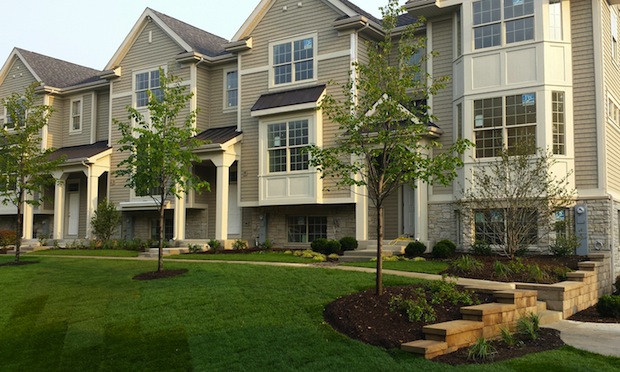While new home sales in the Chicago region inch along the comeback trail, a more discerning buyer is after different things than in the aughts. On the wane are flamboyant excesses and mass-produced clunkery manifested most often in triumphant foyers and palatial bathrooms—the rough-cut stone, heavy wood-cladding, massive Jacuzzi tubs, and grand staircases. In their place, according to brokers and builders close to the action, are lighter and brighter hardwoods, smooth quartz and porcelain kitchen surfaces, soaking tubs, larger laundry rooms, and flexible living space in resignation to the 24-hour work day and smaller family size. Here are the biggest draws for new buyers now.
Multi-Purpose Rooms
“Buyers at most price points want little or no wasted space,” says Liz Brooks, managing broker of Belgravia Realty Group. Belgravia recently finished a set of row homes on Montana Avenue in Lincoln Park and has a few small condo projects in the works. “Living area is condensing and combining more than before, and there’s a focus on multi-purpose rooms that can be guest rooms one day and offices the next.” A must-have among these is the “tech niche”, i.e. a spot that isn’t necessarily a room to plug in and retreat into work. In an effort to limit “wall acne” jacks and outlets are hidden and wireless capabilities. At the higher-end there’s a focus on art-friendly walls.
First-Floor Master Suites
As for the disappearance of the grand foyer and staircase in middle of the road new-builds, it is partly to free up functional space and partly to downplay the upstairs. First-floor master suites are becoming more common and the second floor more utilitarian. According to several agents I spoke with, buyers are looking out for multigenerational needs (there are more and more of these households because of economic realities). Centering activity on the main level helps people either age in place or take in aging parents.
Accessible Kitchens
In the kitchen, flat panel cabinetry and large islands with overhangs and stools are in—recognition of the seemingly irreversible trend of sprinting through meals. There is also less separation than ever between the kitchen, living room, and dining room.
With a tight supply of new construction houses, particularly in the city, look for a lot of these features to emerge in home rehabs.
.jpg)
And in the Suburbs…
As for contrasts between city and suburban new-builds, Jeff Benach, co-principal of Lexington Homes, says interior trends in the ‘burbs typically trail the city by another couple years. For example, smart home tech features like built-in AV and remote lighting, heating, and security controls are fervently in-demand in the city. Benach is able to sell them in the suburbs, too, but few people ask for them. Screened-in back porches are also cropping up more in the suburbs, and suburban builder Edward R. James Homes is supplying them alongside large decks in their new Park Ridge town home development. “Right away some owners converted the porches to all-season office space,” says Jennifer Evans, director of design services for Edward R. James Homes. Otherwise, within the same demographic, trends and tastes are closely matched in the city and suburbs.
Architecturally speaking, the common new-build is subject to far slower change. “The Midwest is tried and true in its attachment to things like mud rooms and traditional brick and stone,” muses Evans. “Architects are always trying to get rid of mud rooms, but they’re still here.”



